Mountains, who doesn’t love mountains? With eighty percent of Africa’s mountains located in Ethiopia it’s wonderful to arrive in the home of the Gheralta mountains. Coming from one of the lowest points on the Africa continent to the Tigray region means climbing forever upward, with winding roads hugging mountain edges and spectacular views out of the car. Tigray is the northernmost region of Ethiopia. It is landlocked and bordered by Eritrea, Sudan, and the Afar and Amhara regions of Ethiopia. The region is largely agrarian, with terraced farming practiced in the highlands to combat soil erosion. However, land degradation and water scarcity are persistent challenges. It’s nice to see some water flowing through the river beds, although some are dry like in Afar. The Gheralta mountains are a spectacular mountain range near the state capital Mekele, they are home to the Tigrayan rock hewn churches. This is why I’m here. Having a visit to Ethiopia and not seeing some of the churches in this country would be a great pity.
Rock hewn churches number around 130. It’s impossible to visit them all as it would take more than a month. These churches are situated high on the mountains, often a 2-3 hour hike up sheer rock faces, clambering over slippery sandstone and sliding back down on your bottom. The stunning rock hewn churches are perhaps the best kept secret of Ethiopia. Not many travellers make it here, and even less in recent times. But those who do can expect to be blown away not only by the evocative churches, but also by sweeping views, fantastic hiking, great birdwatching (170 species), fabulous food and friendly locals. There has been a recent war here, the Tigray war, 2000-2022, this has reduced tourist numbers significantly. The war had 600,000 casualties, then the region faced further instability, as this area is largely reliant on agriculture for income they also had a huge reliance on the tourist dollar, and tourists are mostly staying away.
I stay in the regional capital Mekele, it’s a reasonable size city, and for visiting the first church it’s an early start. Driving through the countryside toward Hawzen, a base for the churches, it’s interesting to note the change in housing style. The homes are built out of limestone and sandstone bricks with thatched roofing. Dry stone walls surround properties and animal yards. It’s an easily resourced building material. The rocks are cleared from the farmland as the oxen-lead ploughs till the fields. The rocks are also used as chocks when trucks pull up outside coffee houses/restaurants. We are held up at one stage on our journey by a camel roadblock. Camels cost around US$1000, so drivers are cautious around them as if injured or killed the driver pays.
Visiting Abuja Yemata Guh, situated at 2580 metres is not for the faint hearted, anyone with a fear of heights or the unfit, it has to be climbed on foot to visit and it’s a tricky climb. Starting from the car park it’s a series of steep steps to reach the cliff face, I stop to catch my breath regularly and psych myself into the climb I’m about to embark on. When I reach the second part of the ascent I almost reconsidered my need to see this church. This part consists of clambering and climbing up a steep rock face wall with only hand grips and foot holds. Barefoot of course, as this is sacred ground! There’s one really tricky part which has locals there with rock wall climbing gear, carabiners and “safety” gear. I see a circling lammergier vulture, perhaps I should rethink! Whilst I sit contemplating this part an elderly man sprints past me and whizzes up the rock face (he does this everyday!), so onward and upward! There are guides with us who guide you where to place your feet, which foot to put where, which hand to use on which handgrip etc. Kaffee the local guide is fabulous and inspiring, as I huff and puff he jogs up and down the mountain assisting where necessary. I’m born and bred here he says, this is home, this is my heritage, he’s lean and muscular and obviously used to the altitude and conditions.
The climbing harness is on, the initial climb starts, once I succeed in taking a few footholds in my bare feet and start making my way upward, confidence grows and I don’t look down. Half way I get a bit stuck but the guys are great and I continue and reach the third part of the climb. We continue upward til we reach a boulder between the two pinnacles, there’s a 250m drop off the edge! I settle in a small cave to recover my breath and slow my heart rate, it’s thrilling. What a scenic spot, panoramic views from either side, the promise of views is certainly delivered. The church is very simple, carved into the rock wall face with a small section outside of brick rock wall obvious. However, inside is an exquisite tiny church. Frescoes painted in the 9th century are in almost mint condition, it’s quaint, sacred and amazing. The monk is elderly, he climbs this mountain every day and has good size congregations at times. Visitors are less, precovid he would see 300 visitors a day now the average is 15. He holds his bible and manuscripts written largely on goatskin up proudly for photos.
Scrambling back down is much easier, tho partly done on my bottom for safety. There’s an assistant for each climber, plus the guide, my young guide must be around 15, he wears plastic sandals, the income he gets from tips is much needed by his farming family. Going back down, the harness requiring area is much easier than ascending, or maybe I’m more comfortable with it. Returning to the village I spend the late afternoon walking some of the local town, there’s not a lot here, but a foreigner is of great interest to the younger kids of the town. Makes you feel a little like the pied piper! A local beer in the delightful hotel garden is a perfect late afternoon way to relax, I’m under avocado trees dripping with almost ready fruit and hedges surrounding a neat garden. I had some Australian pistachios with me, I offer a plate of them to the locals, they enjoyed them so much they asked for more! They won’t last long!
An early start the next morning takes us to Daniel Korkor and Maryam Kokor. These two churches are perched on a mountain ledge around 2 hours hike up the mountain. I hear screeching sounds when we arrive at the car park, lookup Kaffe says, high above us there are grivet monkeys making their zigzagging way up the rock face. They screech to each other as they climb. I was wishing I were that agile as I watch them. Today is a longer but less tricky climb, and no ropes required, there are sections that are precipitous and slippery but the sheer drops aren’t quite as dramatic!
Clambering up over boulders and finding foot and hand grips is the fun of the next couple of hours. I have Amman with me, he is around 16, again wears plastic sandals with little grip and is a delight. His English is good we chatter as we ascend, talking tourism, Ethiopia and Australia. Reaching the first flat area we take some time admiring the views from here, we are around the same height as we reached yesterday I can see Abuja Yemata rock ledge in the distance from where I stand it’s around the same height. Onward and upward we go. We wind our way around the mountain then scamper up the pink and white sandstone faces to the next level, it’s slippery but has good footholds thank goodness. After a couple of strenuous hours we reach a plateau, its home to the two rock churches I’ve come to see. Maryam Korkor is the first, set into the rock, with a beautiful graveyard topped by various colour crosses and many cacti surrounding the grounds its white front is welcoming. There’s a male and a female entry to the church and what appears a gloomy interior. But once inside this oldest rock hewn church there’s marvellous frescoes of saints, Adam and Eve and various other depictions. The church dates to the 4th century and the frescoes to the 17th century.
A tiny yellow clothed woman sits by the path on the walk to the other church on this mountain. This lady is a nun of the church, she’s 94 and has lived on this mountain for more than half a century. Everyone calls her mother, she was a regular visitor to the town below but for the last 10 years she has not been agile enough to negotiate the steep passes. Loved by everyone she is brought food and water from the village by locals. She lives here with her cat. Sadly, the eldest monk of the church died four days ago aged 96, I am shown a cave in the rock face where he has been interred, he too hadn’t left the mountain in many years.
Daniel Kokor is located around the corner, it’s a kind of chapel in the rock looking out over the valley. It’s accessed by a ledge along a dizzying precipice, entry is a tiny door which also serves as the only light source. The door is so narrow my shoulders barely squeeze through. I’m told some tourists don’t fit in through the door! This is a recent church built in the 20th century, the frescoes are different from the other churches. But look at this view from the door
These churches are a highlight of the visit, but the whole area is such a beautiful terrain it’s easy to just sit and admire it. Despite the strenuous uphill climbs I’ve done, they are both enjoyable hikes, with the second one perhaps one of my favourites I’ve ever done. The Gheralta mountains are spectacular, the colour, the enormity of them and the prizes you see when you reach the top are a treat. One prize for me was a pair of African gray hornbills perched in a tree just outside the church, I managed to get a pic of one of them. So the North is done for the moment, a flight back to Addis awaits and on to the next part of the adventure.





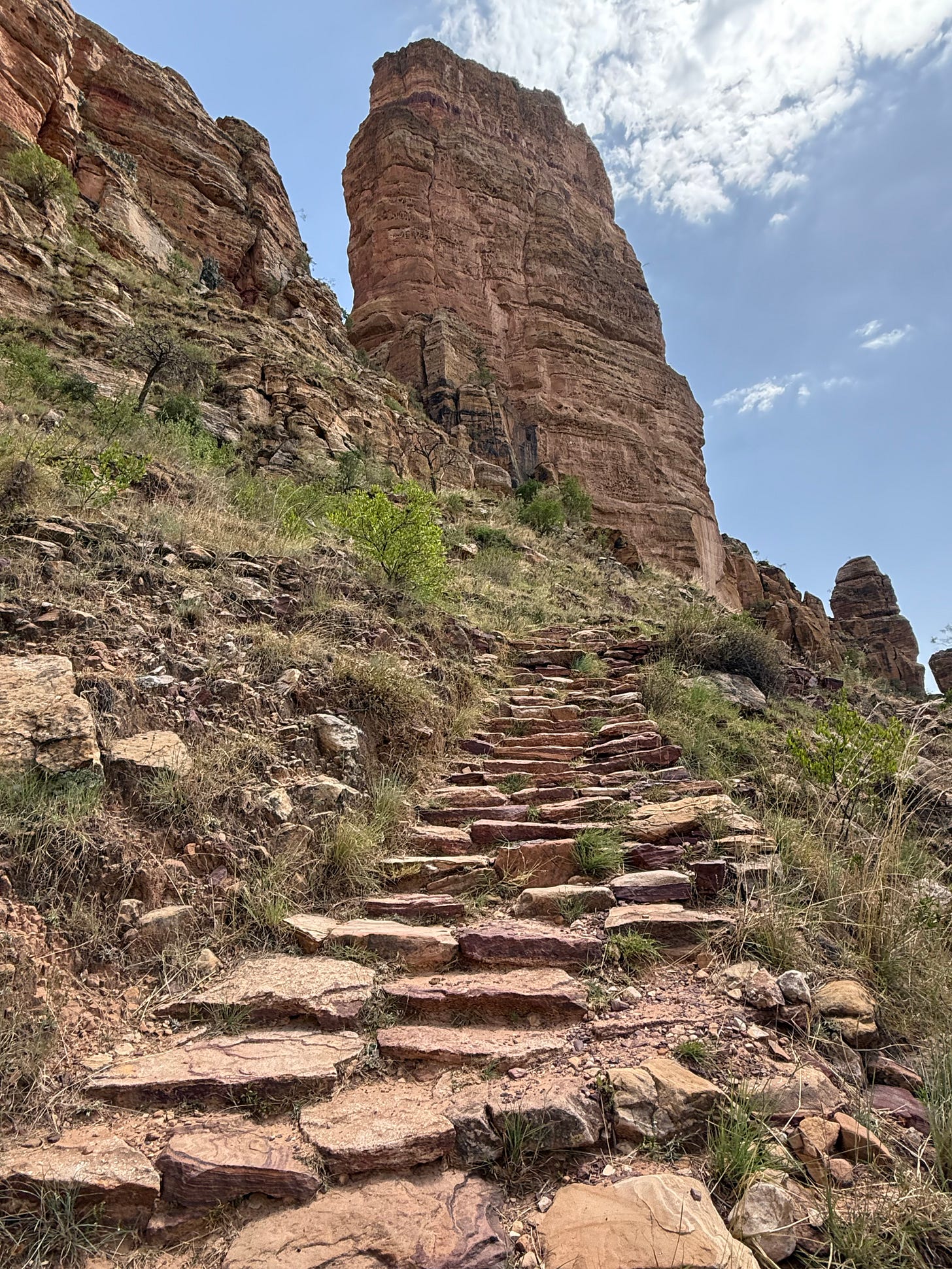

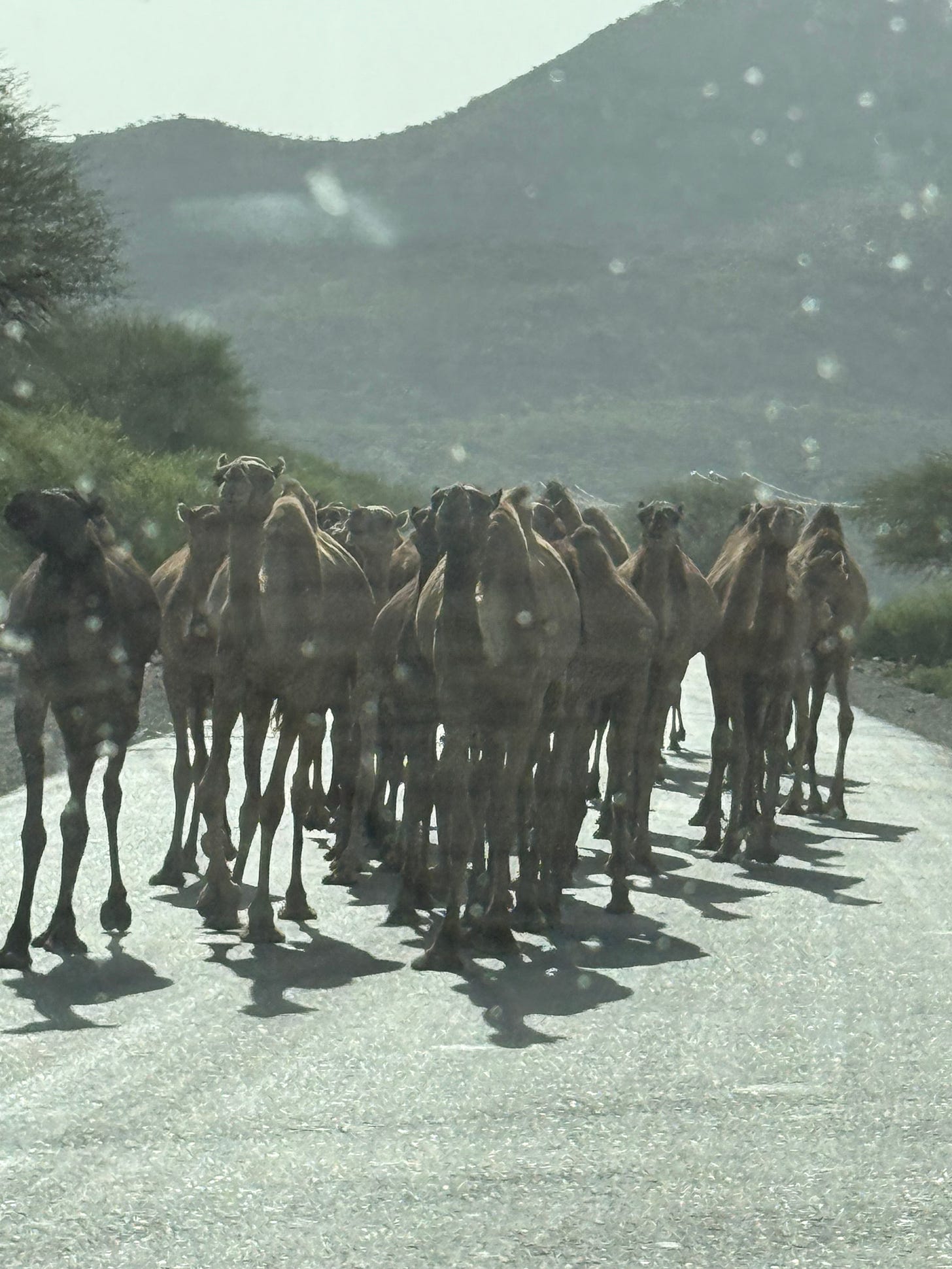
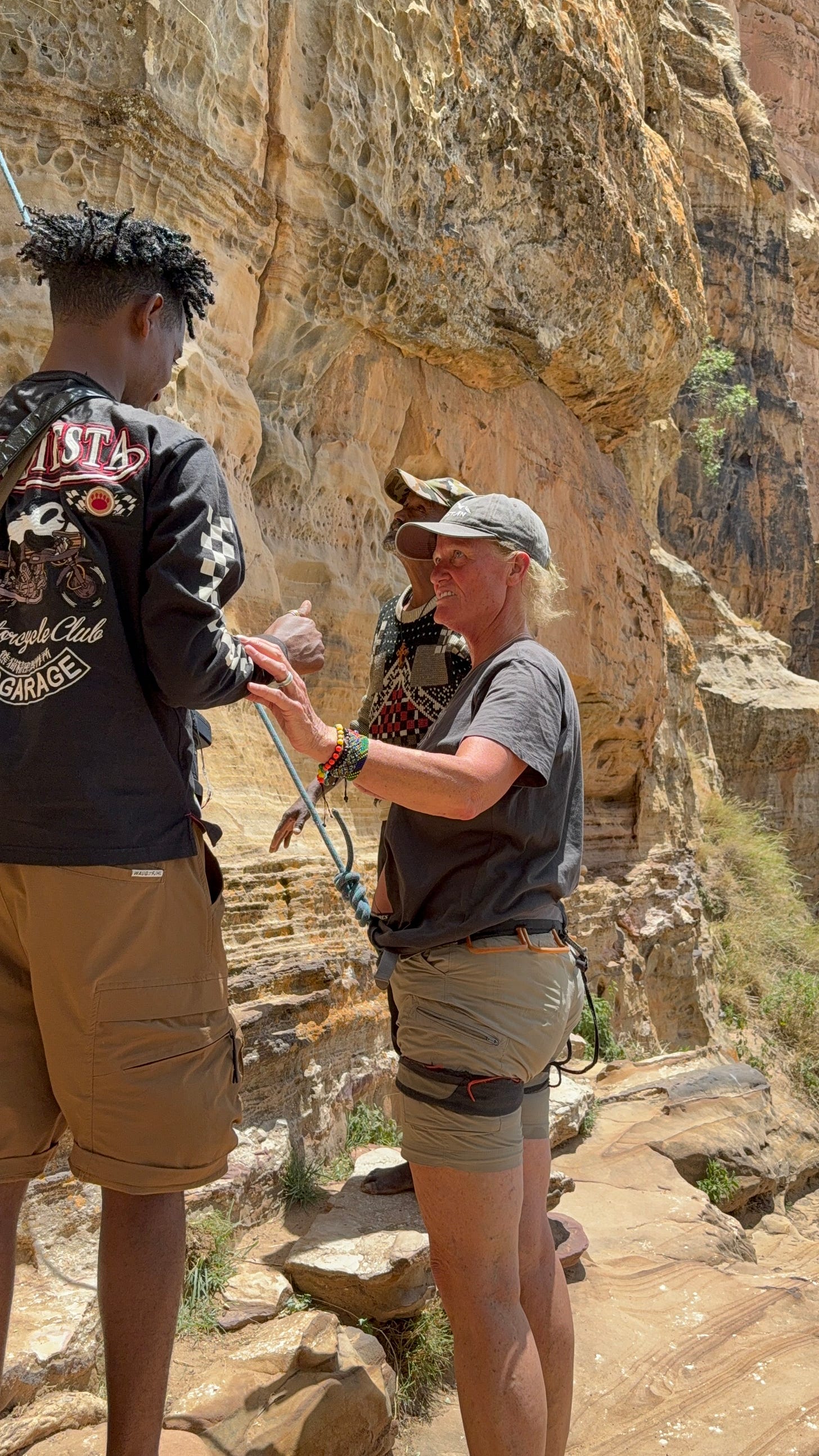
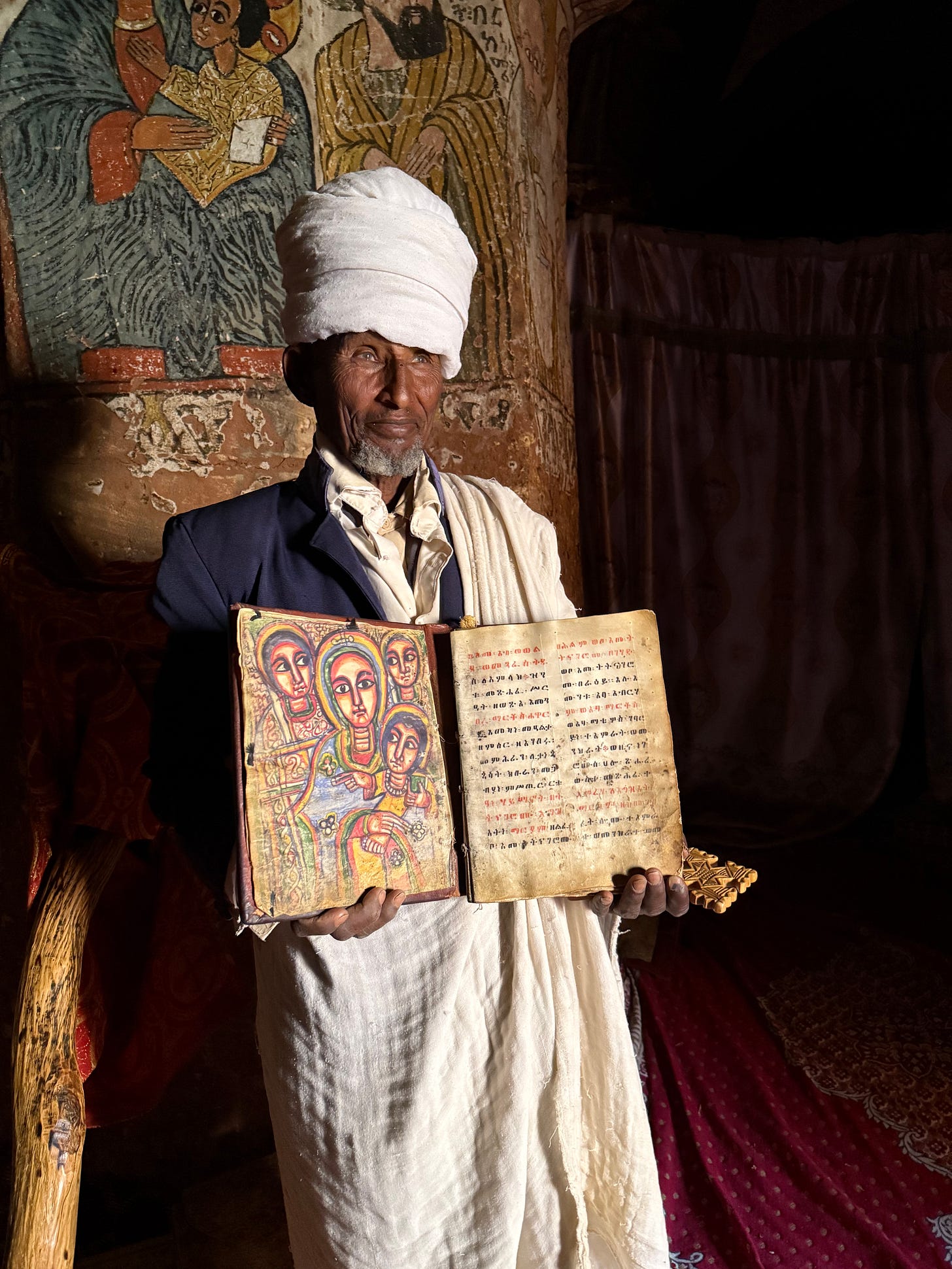

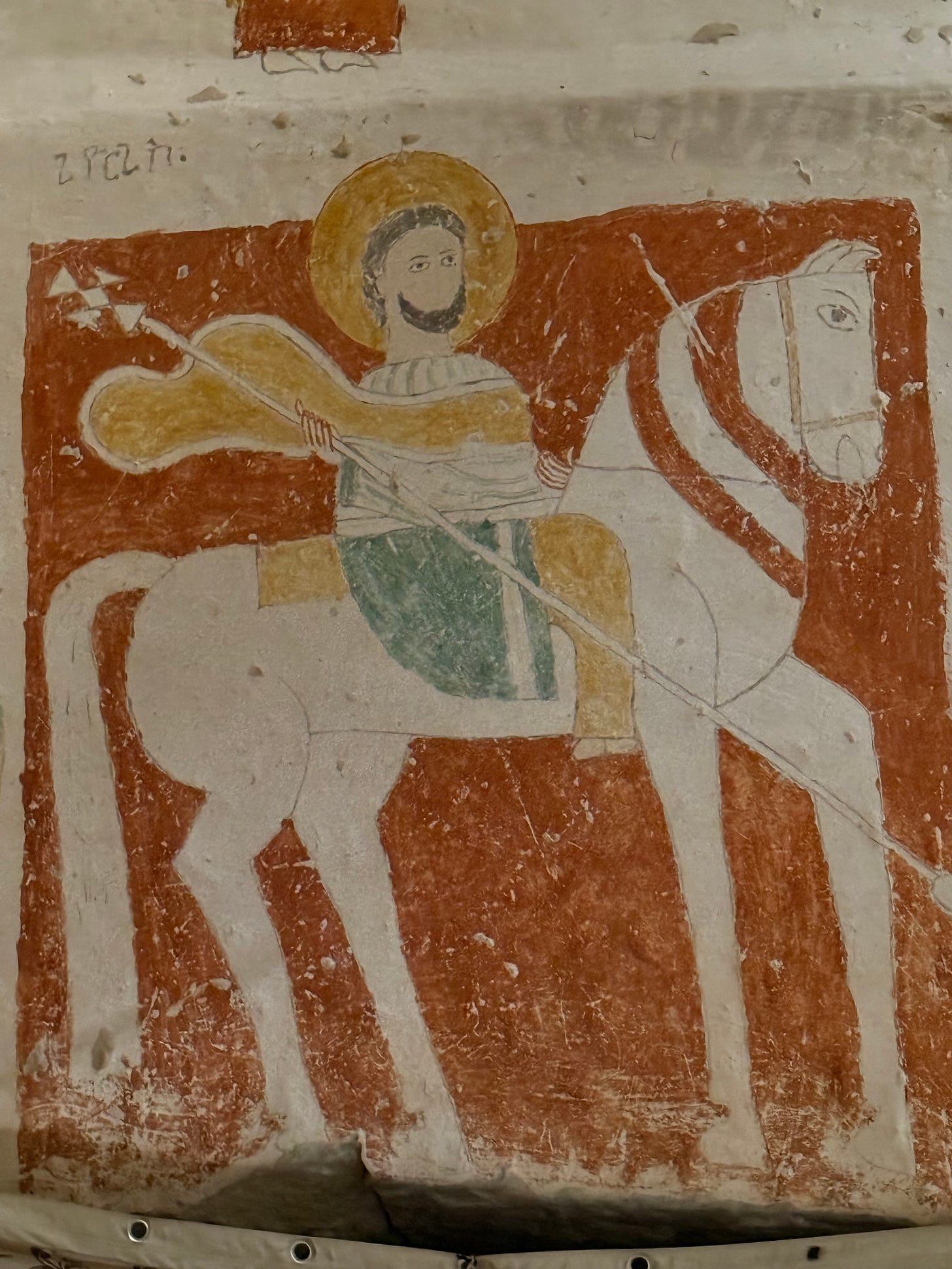
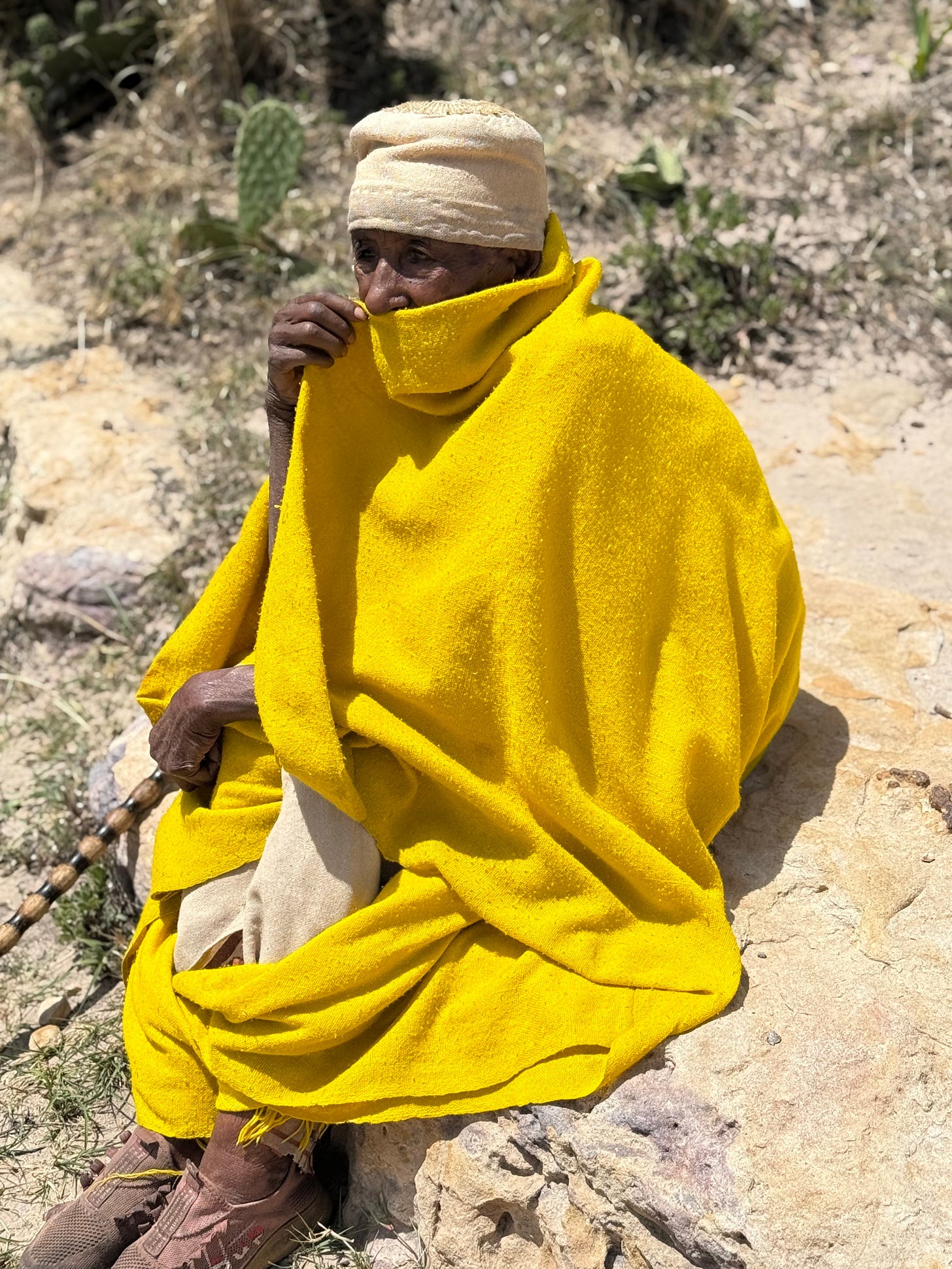

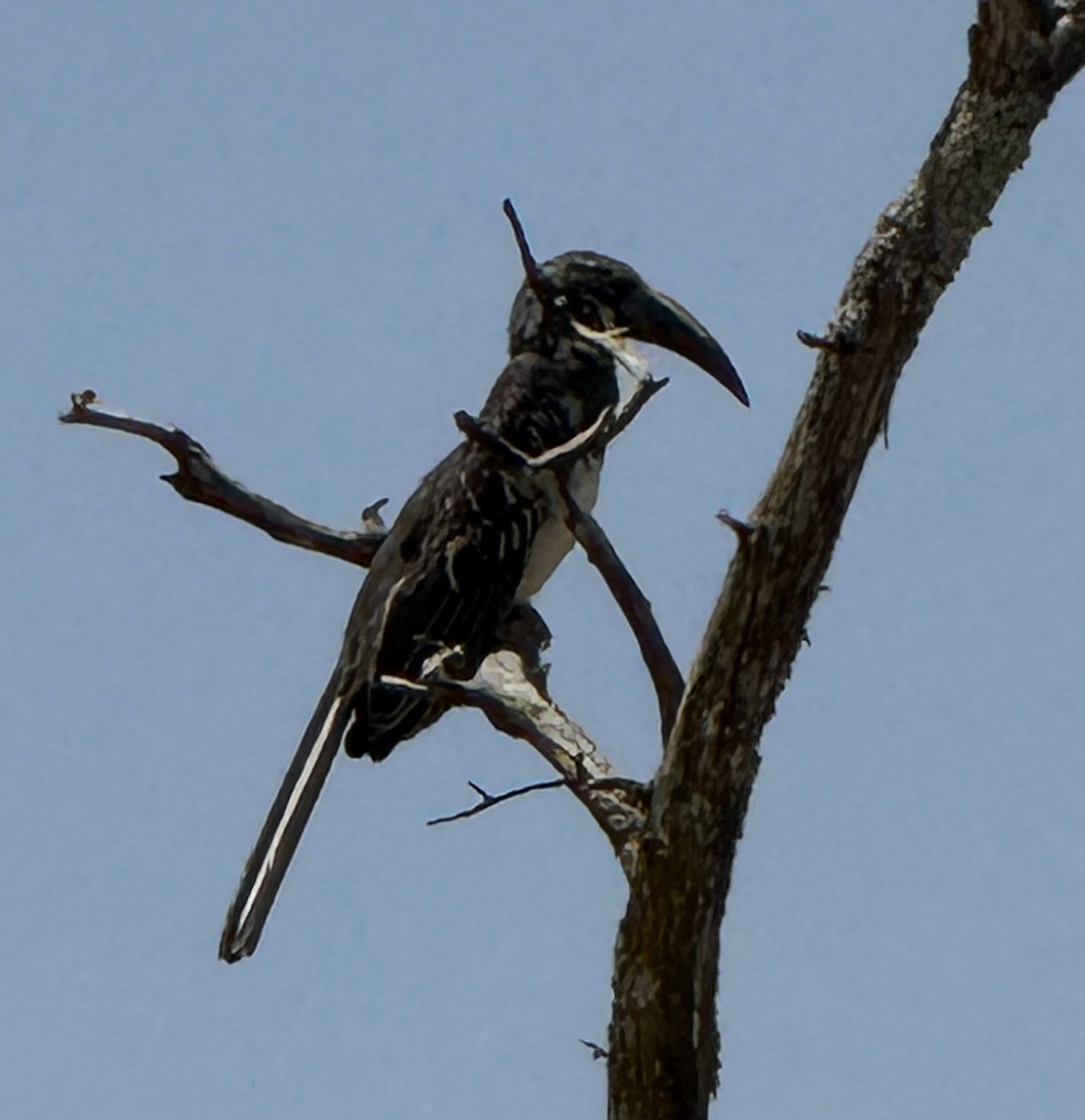
Well, you are certainly. covering a lot of ground - how interesting, lucky you!! I am very envious but am learning to relax and enjoy without the inevitable hiccups and problems which occur in even the best organised trips! Please do keep the travelogue coming,,,, tis not an area where I have been and so is it is most interesting for me. Thank you and enjoy every moment both the ‘ups’ and the ‘downs’. Jeannie. Thank you
Thanks for showing me these amazing churches, the frescoes were fantastic.